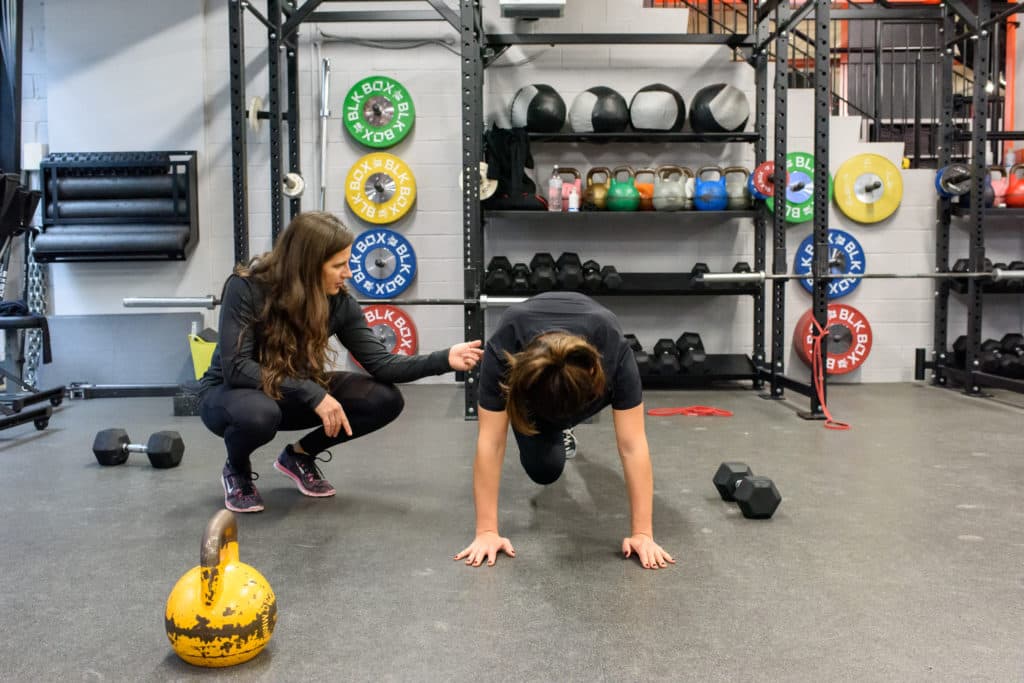
Categories
Interval Weight Training (IWT) – next level HIIT
Interval Weight Training was developed by Pat O’Shea in 1969.
Interval Weight Training (IWT) is an intense type of interval work utilising a combination of athletic lifts and free aerobic exercise. The cross training of athletic type lifting for full range strength and free exercise for anaerobic power, has a major impact on developing explosive power endurance, and can also be great for torching some unwanted body fat. This type of work utilises a greater percentage of the body’s muscle mass, both slow and fast twitch fibres.
The high intensity work places added energy demands on the respiratory, cardiovascular and nervous systems, meaning that more fat and glycogen is burned to support the increased energy demands before, during, and after exercise. The post exercise oxygen consumption of this type of exercise will leave your metabolism revved up and burning calories long after the session has finished.
A standard IWT comes in three phases.
Part 1 begins with an athletic lift. This should be an explosive lift such as a power clean, hang clean, snatch high pull etc. for 8-12 reps. O’Shea originally prescribed that this should be around 70% of your 3 Rep Max for the lift, but different loads and reps can be used to achieve different outcomes.
This is then chased with 2-4 minutes of free aerobic exercise at 90-95% Maximum Heart Rate, meaning this effort should be intense. This is then followed by a two-minute rest period, and repeated for three rounds.
You then should have earned yourself a needed five-minute intermission.
Part 2 follows a similar structure to part 1, but the athletic lift this time is a less technical, more slow and grinding lift such as a front or back squat, still 8-12 reps for three rounds with two minutes of rest between.
You then get a second five-minute intermission.
Part 3 is then usually a complementary circuit to round off the workout. These are often bodyweight movements, for 6-12 reps, and 3-5 sets with minimal rest between reps, no more than one minute. You have many options for part 3; it can be anything supplementary you want to do to round off the workout.
Here are some examples of decent IWT workouts:
Standard IWT
Part 1
10x clean high pull @70% 1RM +
2 min Row @90-95% MHR
3 rounds, rest 2 min between
– 5 min intermission (including 3rd 2 min rest period above) –
Part 2
10x front squat @60% 1RM +
2 min SkiErg @90-95% MHR
3 rounds, rest 2 min between
– 5 min intermission (including 3rd 2 min rest period above) –
Part 3
8x pull up +
8x dip +
8x sit up +
8x push up +
8x KB swing
3 rounds, rest 1 min between
Strength/Power IWT
Part 1
5x power clean @80% 1RM +
90 sec row @90-95% MHR
3 rounds, rest 3 min between
– 5 min intermission (including 3rd 3 min rest period above) –
Part 2
5x front squat @80% 1RM +
90 sec run on treadmill @90-95% MHR
3 rounds, rest 3 min between
– 5 min intermission (including 3rd 3 min rest period above) –
Part 3
7x15m weighted bear crawl @24kg Kettle Bell Swing
Points to note here with this variation are that everything is inversely related. As the weight and percentage of maximum being lifted is higher, the reps and the duration of the cardiovascular effort should be less. You will also require longer between rounds to allow for your CNS to recover more fully allowing you to continue lifting at a higher intensity.
Endurance IWT
Part 1
10x KB clean and press @24-40kg KBS +
4 min row @85-90% MHR
3-4 rounds, rest 1 min between
– 5 min intermission (including last 1 min rest period above) –
Part 2
15x goblet squat @24-40kg KB +
4 min run on treadmill @85-90% MHR
3-4 rounds, rest 1 min between
– 5 min intermission (including last 1 min rest period above) –
Part 3
300 sec “FLR” = Forward Leaning Rest. Basically a straight arm plank, so a plank hold at the top of a push up.
There is a far greater emphasis on the breathing work here, with a shorter rest period between rounds also. For this reason, the lifts are also far less technical, as technique will drop off quickly in this variation.
So there you have the run down of Interval Weight Training. If you have never tried one of these workouts, prepare yourself; they can (and should) be brutal. Enjoy.
If you have any questions on the above or would like some advice on how we could help you with your fitness goal, don’t hesitate, visit our gym in North Kensington and try one of our personal training sessions.
Related Articles
- Interval Training for Fat Loss
- High Intensity Interval Training (HIIT)
- Interval Training: Maximise your Progress
- What is HIIT and Why Is It So Effective For Burning Fat?
- Enhance Your Training Results with the Cardiac Output Method

